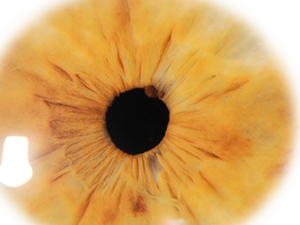Strike offers free trial along with subscription to help traders, inverstors make better decisions in the stock market. The efficiency of the trader’s understanding and execution of the Inverted Hammer pattern, as well as their talent and experience, affect the pattern’s profitability. Profitability is influenced by knowledge of reliable patterns, a comprehension of market dynamics, and the use of effective trading methods.
Is a hammer candlestick pattern bullish?
After a subsequent downtrend, the inverted hammer provides a buying opportunity that aligns with the support level. They enter the market at the close of the inverted hammer candle and place a stop loss at the support zone or below the bar. The Inverted Hammer candlestick formation occurs mainly at the bottom of downtrends and can act as a warning of a potential bullish reversal pattern. When it comes to the upper wick, the classic hammer pattern has none, while when you are going to meet this model on live charts, you will see some deviations, including small shadows above the body. Candlestick charts have become some of the most popular charting methods for technical traders.
Understanding Hammer Candlesticks
Essentially the opposite of a hammer candlestick, the shooting star rises after opening but closes roughly at the same level of the trading period. The upside down green hammer or the red inverted hammer candlestick also occurs during a downtrend and consists of a single bar with a small body at the bottom and a long upper shadow. It states that buyers are taking control.Both patterns indicate bullish reversals but have slight differences in their candlestick formations.
Forex, Gold & Silver:
- Conversely, if the pattern’s signal appears weak and the market seems likely to continue its downtrend, traders can opt to go short.
- Hammer and inverted hammer are both bullish reversal patterns that take place at the end of a downtrend.
- It states that buyers are taking control.Both patterns indicate bullish reversals but have slight differences in their candlestick formations.
- A hammer is a price pattern in candlestick charting that occurs when a security trades significantly lower than its opening, but rallies within the period to close near the opening price.
- The regular Hammer pattern is also used as a potential signal of a future reversal but the difference is that the longer wick is now on the bottom and there is little to no wick on the upper side.
- Keep an eye out for the inverted hammer during your next trading session, and you might just discover a bullish opportunity.
A doji signifies indecision because it is has both an upper and a lower shadow. Dojis may signal a price reversal or a trend continuation, depending on the confirmation that follows. This differs from the hammer, which occurs after a price decline, signals a potential upside reversal (if followed by confirmation), and only has a long lower shadow. A hammer is a price pattern in candlestick charting that occurs when a security trades significantly lower than its opening, but rallies within the period to close near the opening price. This pattern forms a hammer-shaped candlestick, in which the lower shadow is at least twice the size of the real body.
What does an inverted hammer pattern suggest about market sentiment?
Furthermore, effective risk management strategies are crucial while trading the setup. Setting appropriate stop-loss orders to limit potential losses and implementing proper position sizing techniques can help mitigate risks and protect trading capital. Similar to digital options, traders can use the hammer and inverted hammer patterns to find entry points. Moreover, they do it in the same way, once the pattern appears on the chart and the candlestick is closed, you can buy a currency pair or a stock. However, unlike digital options, where risks are fixed, in Forex or stock trading, you can use the hammer to set stop losses. The reliability of an Inverted Hammer candlestick pattern in technical analysis is a matter of debate.
A long shadow shoots higher, while the close, open, and low are all registered near the same level. Irrespective of the colour of the body, both examples in the photo above are hammers. Another crucial difference is that an Inverted Hammer can be found right after a downtrend whereas a Hanging Man can be found right after uptrends. Always use other forms of technical analysis or indicators to complement your decision making process along with proper risk management strategies. The profit-taking order(s) should be placed at the previous support and dependent on your risk tolerance. In general successful trading with candle charts requires an understanding not only of the candle patterns but also of where the candle pattern appears and in the context of risk/reward analysis.
The Red Inverted Hammer’s upper shadow is very long, signifying the peak price of the asset during that particular period. It demonstrates that despite buyers’ best efforts, sellers ultimately took charge and pushed the price back down. Let’s hammer this into our brains using the daily chart of Nvidia on March 27th, 2020. The colour of an Inverted Hammer candle won’t play a major role on the upcoming forecast. Join thousands of traders who choose a mobile-first broker for trading the markets. Confirmation came on the next candle, which gapped higher and then saw the price get bid up to a close well above the closing price of the hammer.
The Inverted Hammer pattern is characterised by a single candlestick with a small body and a long upper shadow (wick) that is at least twice the length of the body. The hammer candlestick is a bullish trading pattern that may indicate that a stock has reached its bottom and is positioned for trend reversal. Specifically, it indicates that sellers entered the market, pushing the price down, but were later outnumbered by buyers who drove the asset price up.
The body of the Red Inverted Hammer in the pattern is typically coloured red or black, indicating a lower closing price compared to the opening price. The body is observed in various sizes, but it is generally small in relation to the overall candlestick. Candlestick charting techniques were further refined and expanded upon by other Japanese traders and analysts. Western traders and analysts in the 20th century began incorporating these techniques into their technical analysis methodologies. Let’s learn how traders typically lose money when trading this pattern, and then I’ll show you how professional, data-driven traders execute this setup.
I share my knowledge with you for free to help you learn more about the crazy world of forex trading! Join 1,400+ traders and investors discovering the secrets of legendary market wizards in a free weekly email. Get virtual funds, test your strategy and prove your skills in real market conditions. This article represents the opinion of the Companies operating under the FXOpen brand only.
Like the Hammer, the Inverted Hammer occurs after a downtrend, and it also has one long shadow and one nonexistent shadow. The key to identifying a Hammer versus an Inverted Hammer is the location of the long shadow. A Hammer’s long shadow extends from the bottom of the body, while an Inverted Hammer’s long shadow projects from the top. Statistically speaking, the Inverted Hammer cannot be considered a reliable technical analysis pattern.
Traders frequently seek out confirmation signals and weigh the significance of the pattern against those of other technical analysis tools and variables. These also include bullish candlestick patterns, breaks of significant resistance levels, or bullish indicators from other technical analysis instruments. If you flip the Hammer candlestick on its head, the result becomes the Inverted Hammer candlestick pattern.
Now, we want the inverted hammer to occur after a downtrend, when the market is oversold. And one indicator that does a fantastic job of quantifying this, is the RSI indicator. Please remember that the strategies discussed below aren’t meant for live trading. They’re merely examples of how we would begin building a strategy that uses the inverted hammer.
At one point, the inverted hammer was created as the bulls failed to create a hammer, but still managed to press the price action higher. Although the session opens higher than the recent lows, the bears push the price action lower to secure new lows. However, the bulls surprise them with a press higher to secure the bullish (green) close. At this point, it is clear that the balance has changed in favour of the buyers, and there is a strong likelihood that the trend direction will change. Hammers also don’t provide a price target, so figuring what the reward potential for a hammer trade is can be difficult. In this particular example, a trader can place a stop loss below the grey line, which highlights the lowest point of the hammer candlestick.
On the other hand, if the price does begin to rise, rewarding your recognition of the hammer signal, you will have to decide on an optimal level to exit the trade and take your profits. On its own, the hammer signal provides little guidance as to where you should set your take-profit order. As you strategize on a potential exit point, you may want to look for other resistance levels such as nearby swing lows. As with any trade, it is advisable to use stops to protect your position in case the hammer signal does not play out in the way that you expect. The level at which you set your stop will depend on your confidence in the trade and your risk tolerance. In this case, once you confirm the next green candle, you might have taken the trade to go long.
Traders who are hoping to profit from a hammer signal often buy during the formation of this upward confirmation candle. Confirmation occurs if the candle following the hammer closes above the closing price of the hammer. Candlestick traders will typically look to enter long positions or exit short positions during or after the confirmation candle. For those taking new long positions, a stop loss can be placed below the low of the hammer’s shadow. Before incorporating candlestick patterns into your trading methods, you should do extensive research and backtesting to enhance your performance. The long lower shadow in a hammer pattern indicates that buyers were able to push the price higher from the lows of the session, suggesting a potential bullish reversal.
It’s important to note that the hammer is a trend reversal pattern, meaning it signals a shift from a downtrend to an uptrend. Therefore, you need to have a previous decline difference between hammer and inverted hammer before the hammer pattern emerges. Keep an eye out for the hammer pattern during your next trading session, and who knows, you might just discover the power of the hammer.

